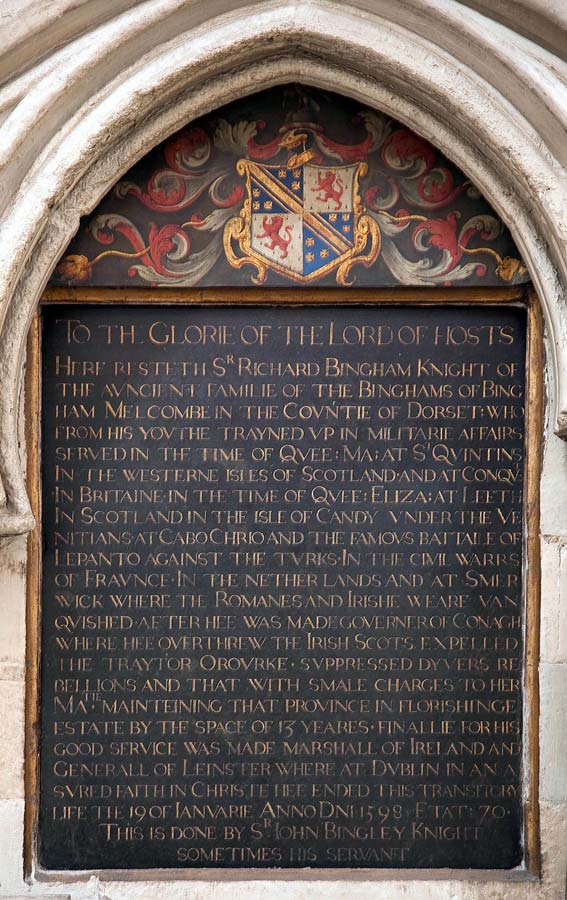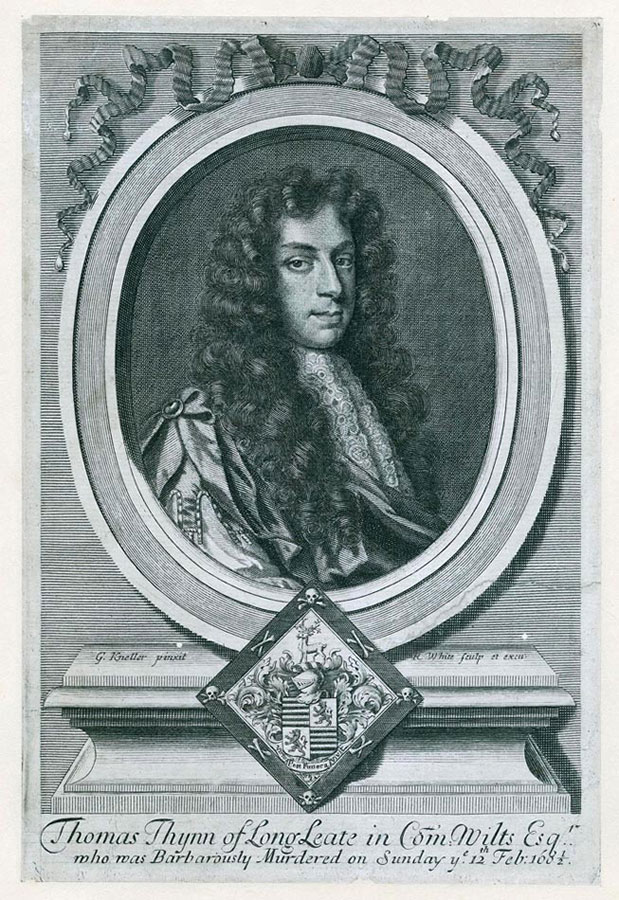Richard Bingham
In the south choir aisle of Westminster Abbey is a wall tablet of black alabaster, with a shield of arms, for Sir Richard Bingham. The inscription reads:
To the Glorie of the Lord of Hosts Here resteth Sr.Richard Bingham Knight of the ancient familie of the Binghams of Bingham Melcombe in the countie of Dorset: who from his youthe trayned up in militarie affairs. Served in the time of Quee:Ma: [Mary I]: at St Quintins, In the westerne isles of Scotland and at Conquet in Britaine [Brittany]. In the time of Quee: Eliza: at Leeth [Leith] in Scotland, In the Isle of Candy under the Venitians, At Cabo Chrio and the famous battaile of Lepanto against the Turks, In the Civil warrs of France, In the Netherlands, and at Smerwick where the Romanes and Irishe weare vanquished. After hee was made Governer of Conagh [Connacht] where hee overthrew the Irish Scots, expelled the traytor Orourke, suppressed dyvers rebellions, and that with smale charges to Her Matie. mainteining that Province in florishinge estate by the space of 13 yeares. Finallie for his good service was made Marshall of Ireland and Generall of Leinster Where at Dublin in an assured faith in Christe he ended this transitory life the 19 of Januarie, Anno Dni. 1598. Aetat.[aged] 70. This is done by Sr.John Bingley Knight sometimes his servant.
Bingham’s date of death in the inscription is in Old Style dating and would now be called 1599. William Camden, in his guide to the Abbey published in 1600, gives a slightly different inscription and does not include the last line about Bingley (a John Bingley was knighted in 1618). He gives "...in the Isle of Candy, at the burning of Cabo Chrio in Turkie, in the Civill warres of France, in the Netherlands, and at Smerwicke in Ireland. After he was made Governor...", with no mention of Lepanto. In John Dart’s history of the Abbey in 1723 the inscription is as it is now. The painted coat of arms shows "Quarterly, 1 & 4: azure a bend cotised between six crosses patee or (a blue shield with a diagonal bend and six gold crosses for Bingham), 2&3: Ermine a lion rampant gules crowned or (for Turbervill)". The crest shows a falcon on a rock.
The Bingham family was of Saxon origin. Sir Richard was a son of Robert Bingham and his wife Alice (Coker). He served in the army in the battles of St Quentin and, according to the later version of the inscription, at Lepanto. Elizabeth I granted him an annuity in recognition of his services and he was knighted in Dublin in 1584. In 1588 he married Sarah Heigham but his Dorset estates were inherited by a son of his brother George so it seems they had no surviving children.
Further reading

© National Portrait Gallery, London [Creative Commons CC BY-NC-ND 3.0]

This image can be purchased from Westminster Abbey Library
Image © 2024 Dean and Chapter of Westminster










